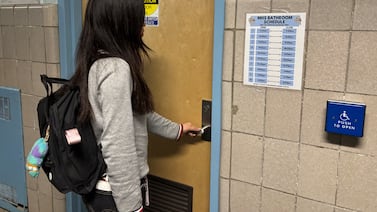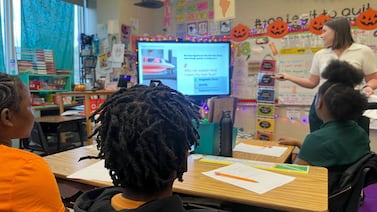Sign up for Chalkbeat New York’s free daily newsletter to get essential news about NYC’s public schools delivered to your inbox.
New York’s state and city education officials aren’t planning to shy away from diversity, equity, and inclusion efforts in schools despite Thursday’s threats from the Trump administration to strip away billions in federal funding.
In the latest of a series of attacks on DEI, the U.S. Department of Education is giving state education agencies 10 days to prove their schools are eliminating diversity, equity, and inclusion efforts the Trump administration deems unlawful.
States must certify their schools comply with the administration’s controversial interpretation of Title VI of the Civil Rights Act and with the U.S. Supreme Court decision in Students for Fair Admissions v. Harvard, according to a letter federal Education Department officials sent Thursday.
Those failing to comply appear to risk losing all federal funding, though the letter specifically calls out Title I funds that support high poverty schools.
“We are reviewing the letter now and will respond in due course,” New York State Education Department spokesperson JP O’Hare said in a statement. “The Board of Regents and State Education Department continue to work with New York’s schools to increase equity, access, and opportunities in education for all New York State students.”
At stake in New York City: more than $2 billion, or roughly 5% of the Education Department’s overall budget, which covers a range of programs targeting students from low-income households, those living in shelters, or students with disabilities, for example. The largest pot of federal funding goes to schools serving low income families through the Title I program. The federal government sends roughly $679 million in Title I funds each year to New York City, where nearly 1,300 of 1,600 schools qualify for the program.
Many legal experts believe the administration’s interpretation of the Supreme Court decision is incorrect and would not hold up in court.
Schools Chancellor Melissa Aviles-Ramos on Thursday defended the diversity of the nation’s largest school system in response to questions about the Trump administration directive.
“Diversity is a superpower here in New York City, we are always going to honor that,” she said at an unrelated event. “We are always going to make sure that we are serving every child and family in New York City.”
The chancellor emphasized that her agency receives far more money from sources outside the federal government. About 57% of local school funding comes from the city and 37% comes from the state.
Aviles-Ramos has been pushing Albany lawmakers to increase the amount of money the city would receive under the state’s Foundation Aid funding formula. Under a proposal to tweak the formula from Gov. Kathy Hochul, the city stands to receive $350 million less than it would have otherwise gotten.
“That’s where we’re putting our focus,” Aviles-Ramos said of her Albany visits.
At a City Council hearing last month, Education Department officials acknowledged that they have not made detailed contingency plans in the event of significant federal funding cuts.
“We’re having internal conversations around all the possibilities, but we cannot enact on a plan with certainty when there are so many moving pieces,” Aviles-Ramos said.
New York City education leaders said cuts to federal dollars, including Title I money, could force cuts from special education to career and technical programs.
Lorenzo Chambers, the principal of P.S. 279 in Brooklyn, said cutting funding for high-need public schools “has long-term potential to set the country back.”
The school uses federal funding to pay for after-school programs, hygiene products and uniforms for students living in temporary housing, books, and other supplies. Most of the school’s students are Black or Caribbean-American and come from low-income families.
The money does not represent a substantial proportion of the school’s budget, though it would be challenging to replace, Chambers said. Cutting those dollars in an effort to stamp out diversity and equity efforts “is steeped in white supremacy,” he added. “Those are the undertones.”
David Adams, the CEO of Urban Assembly, which directly supports a network of 22 New York City public schools, said about 8-10% of funding for schools in the network comes from the federal government.
“Title I funding is the difference between an extra counselor or not,” Adams said. “Title I funding is the difference between enrichment activities like dance, art, and music.”
“We’re gonna pay for this one way or another,” Adams added. “We can pay for it in developing young people who are already able to contribute to our society, or we can pay for it incarcerating people.”
Amy Zimmer is the bureau chief for Chalkbeat New York. Contact Amy at azimmer@chalkbeat.org.
Alex Zimmerman is a reporter for Chalkbeat New York, covering NYC public schools. Contact Alex at azimmerman@chalkbeat.org.





